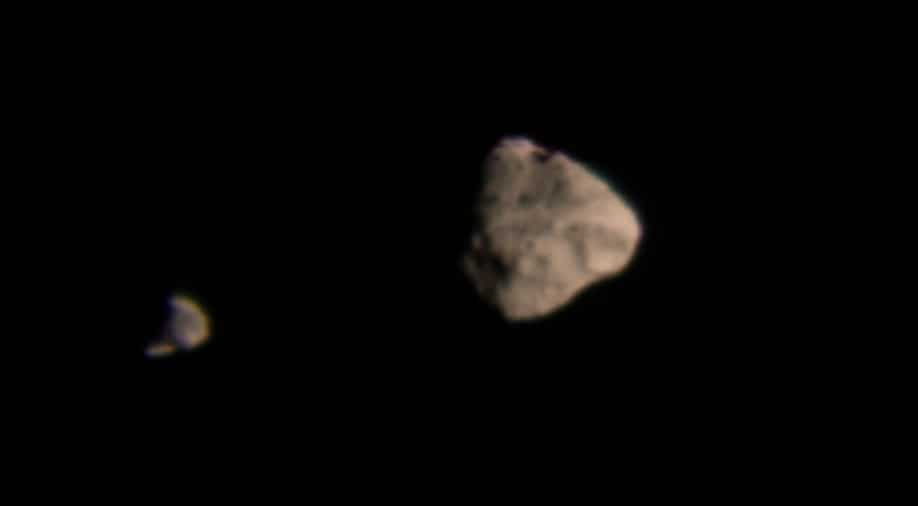Asteroid Dinky's double moon, discovered by Lucy mission, has officially been named
Story highlights
NASA named the Lucy mission after the hominid skeleton fossil Lucy, discovered in Ethiopia in 1974 and estimated to be 3.18 million years old. The mission's objective is to revolutionise our knowledge of planetary origins and the formation of the Solar System.
About a month ago, NASA's Lucy mission flew past an asteroid named Dinkinesh and discovered that it has a tiny moon. But it wasn't any ordinary moon. It was a contact binary moon, where two space rocks gently rested against each other.
This unique moon needed a name. So, the International Astronomical Union (IAU) approved "Selam," meaning peace in Ethiopia's language.
trending now
However, Selam is not a random name. While Dinkinesh is the Ethiopian name for the Lucy fossil, Selam comes from another fossil of the same species of human ancestor.
NASA named the Lucy mission after the hominid skeleton fossil Lucy, discovered in Ethiopia in 1974 and estimated to be 3.18 million years old. The mission's objective is to revolutionise our knowledge of planetary origins and the formation of the Solar System.
Selam was the name of the fossil of a three-year-old girl, discovered in 2000 in Dikika, Ethiopia and belonged to the same species as Lucy. Although the fossil is often called Lucy's baby, it lived more than 100,000 years before Lucy.
The surprisingly high-resolution images by the Lucy mission showed boulder-strewn surfaces on Dinkinesh and Selam. If looked at closely, the 790-metre wide asteroid, Dinkinesh, looks similar to Bennu, visited by OSIRIS-REx.
As the team at NASA completed downlinking the data from Lucy's first asteroid encounter and continues to process it, they're expecting more images to come from the flyby.
NASA has added Lucy's encounter with Dinkinesh as an in-flight test of the spacecraft's systems and instruments. A recent blog post by Katherine Kretke of the Southwest Research Insitute said all systems worked fine.
Kretke wrote, "The tools and techniques refined with data from this encounter will help the team prepare for the mission's main targets, the never-before-explored Jupiter Trojan asteroids." She added, "In addition to the images taken by Lucy's high-resolution L'LORRI camera and its Terminal Tracking Cameras (T2Cam), Lucy's other science instruments also collected data that will help scientists understand these puzzling asteroids."
Lucy plans to visit nine more asteroids in six separate encounters in the next decade. After receiving a boost from Earth's gravity in December 2024, the spacecraft will head towards the main asteroid belt. In April 2025, it will encounter an asteroid named Donaldjohanson. The spacecraft will continue to pass through the main belt and finally reach its primary targets, the Jupiter Trojan asteroids, in 2027.
(With inputs from agencies)
















